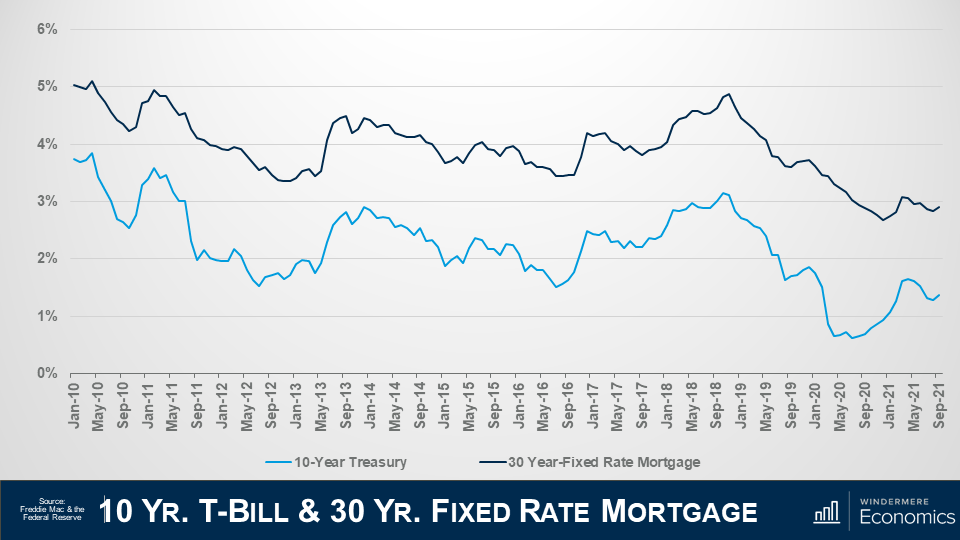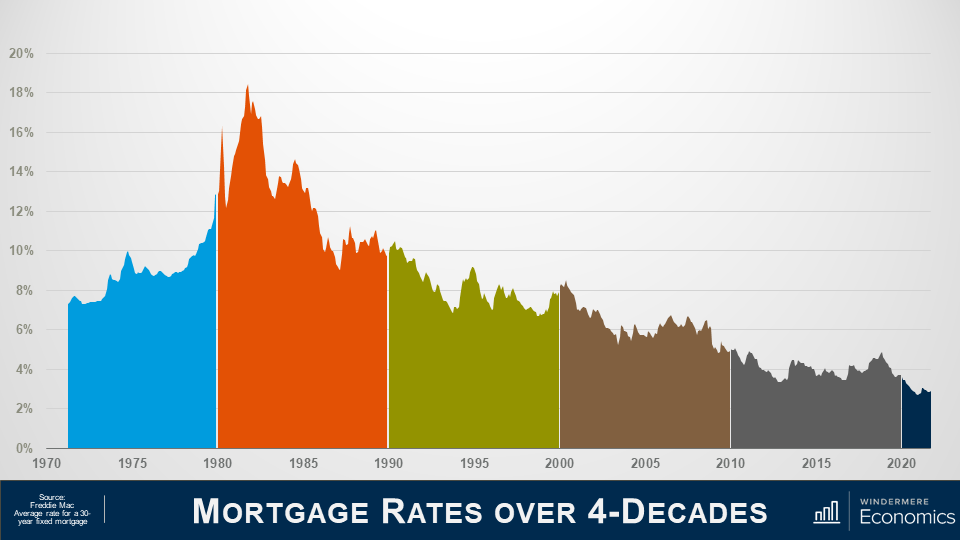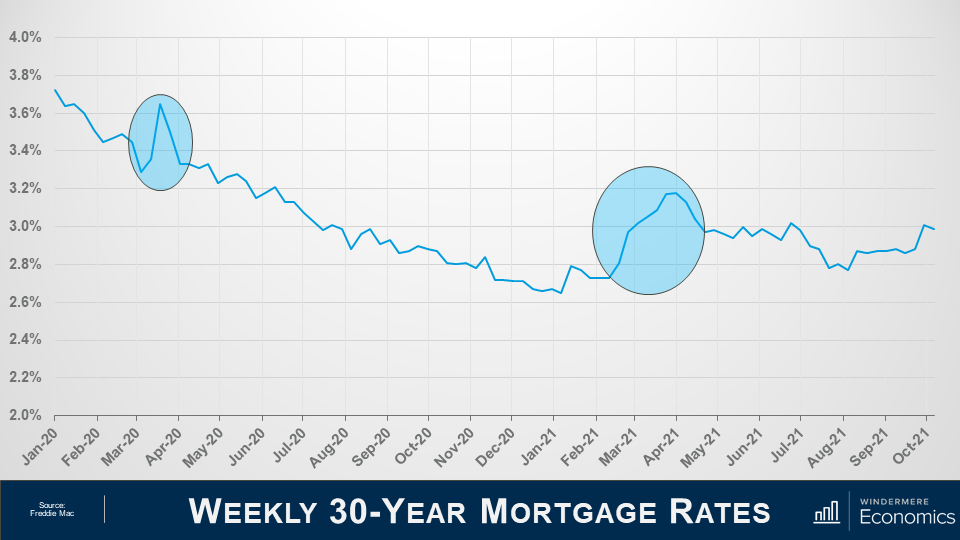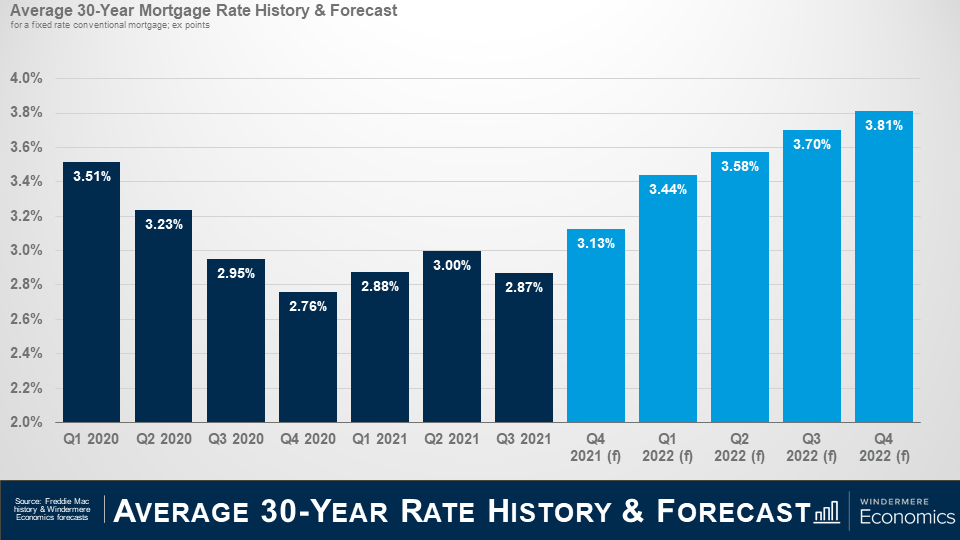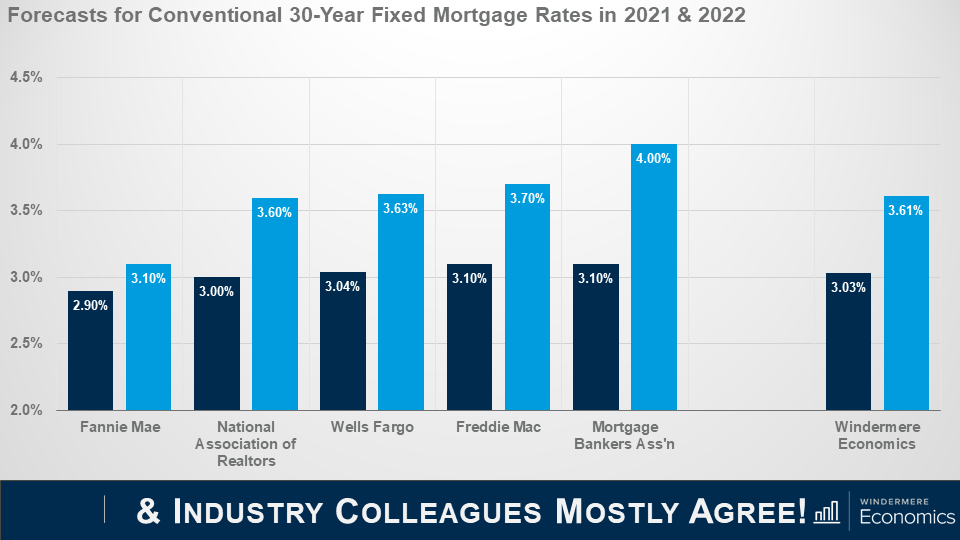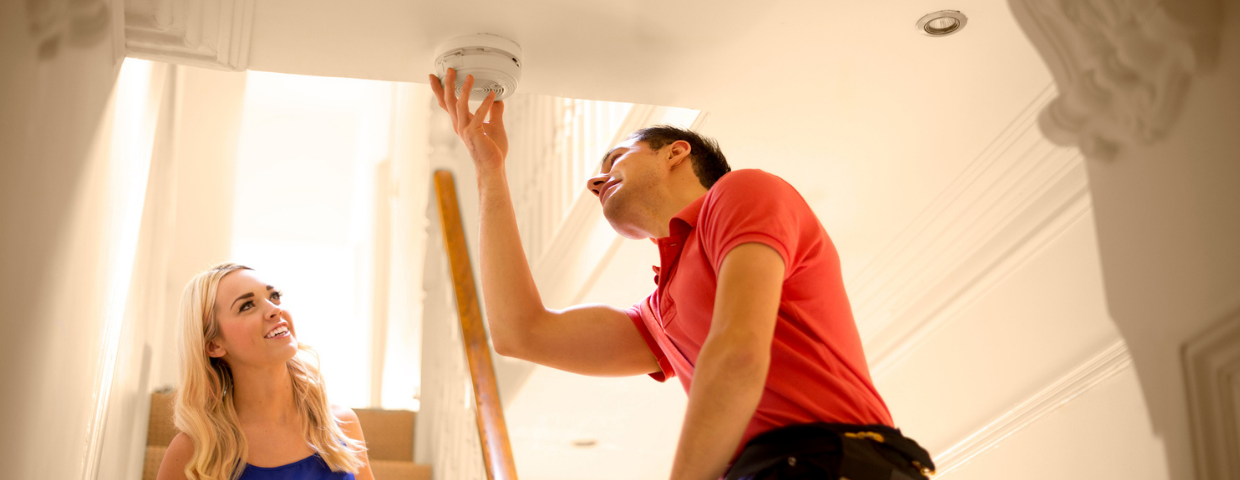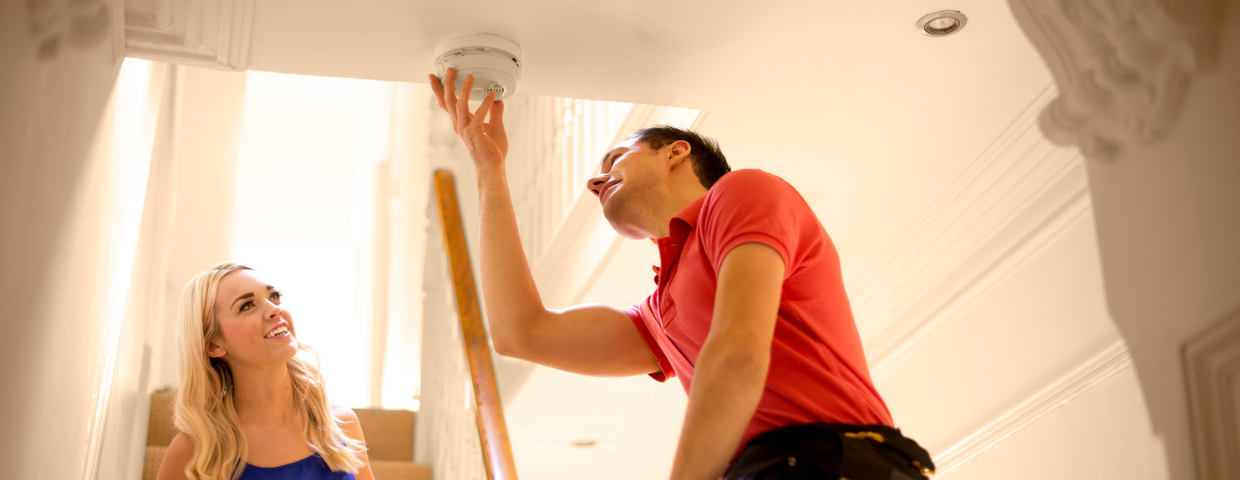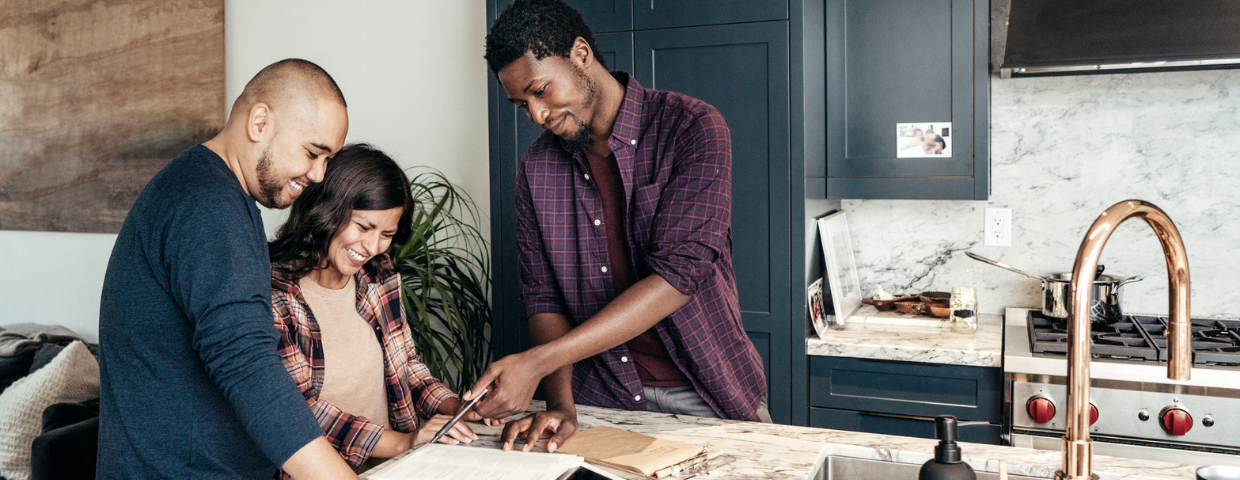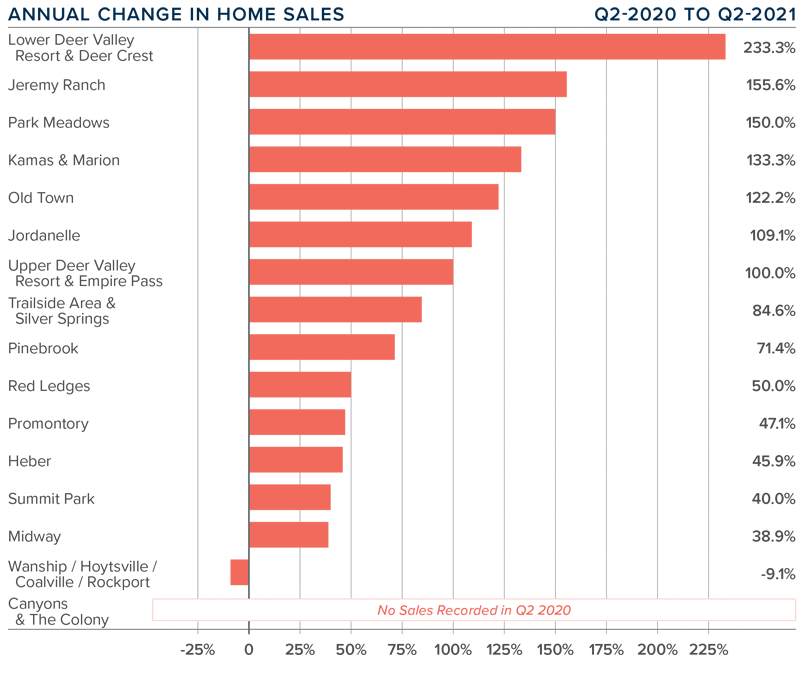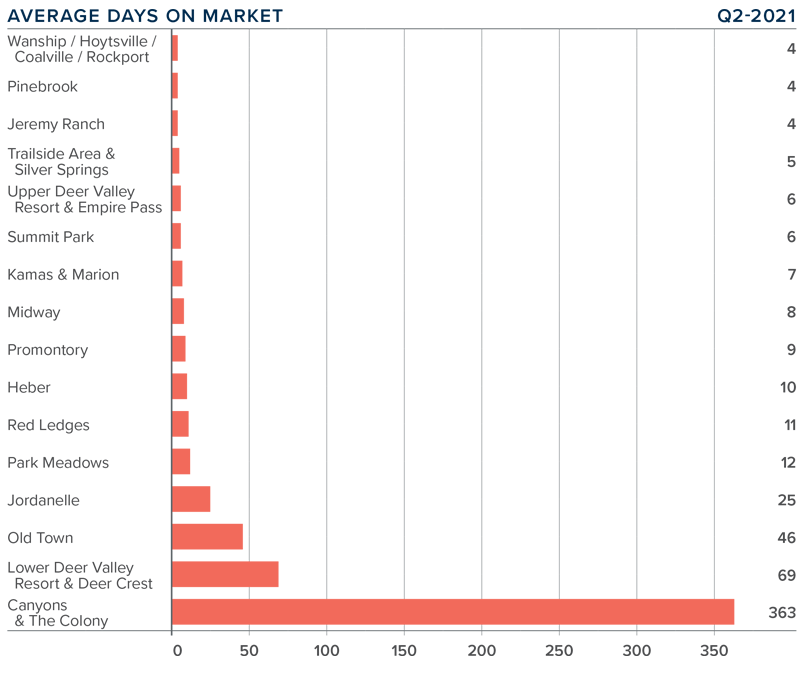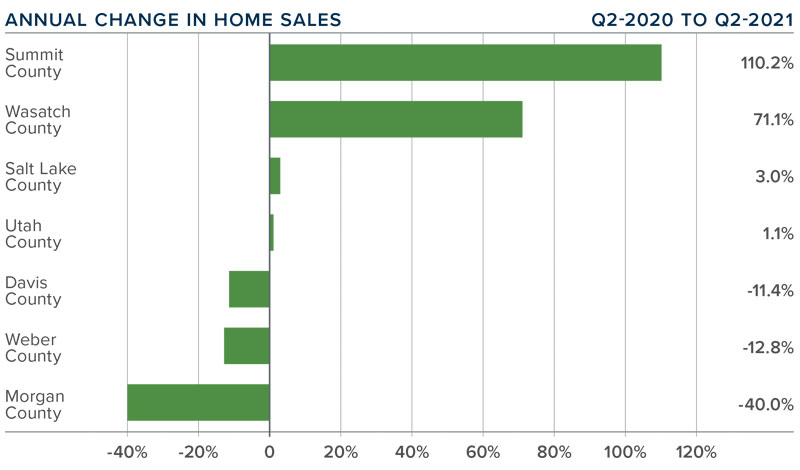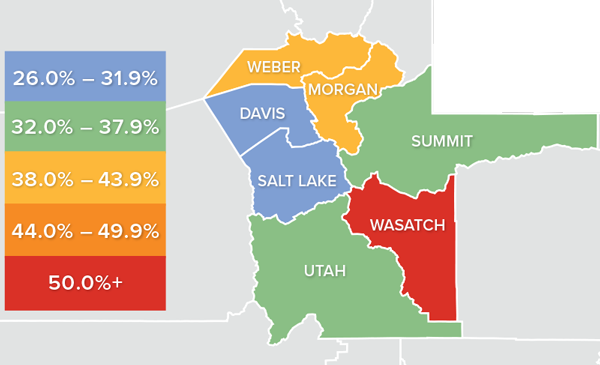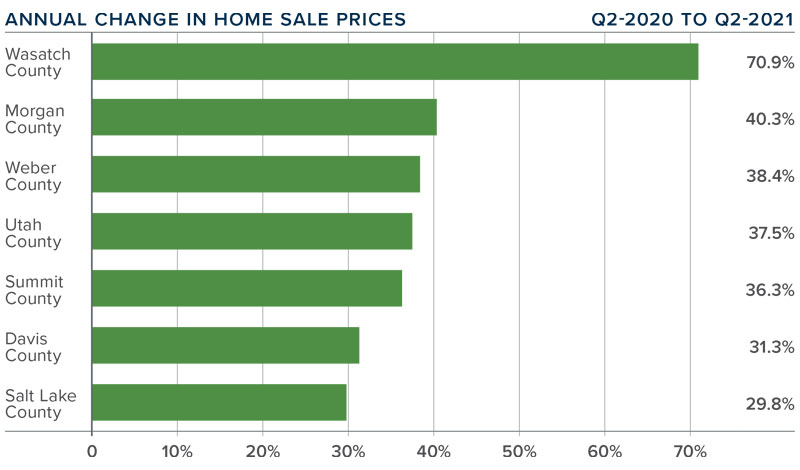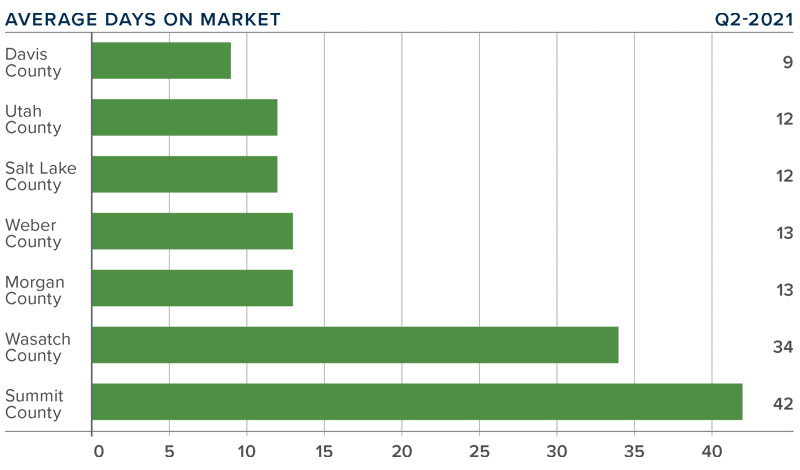
The following analysis of select counties of the Utah real estate market is provided by Windermere Real Estate Chief Economist Matthew Gardner. We hope that this information may assist you with making better-informed real estate decisions. For further information about the housing market in your area, please don’t hesitate to contact your Windermere Real Estate agent.
REGIONAL ECONOMIC OVERVIEW
The summer months saw continued growth in Utah’s labor market, which had already recovered all of the jobs lost to COVID-19 earlier this spring. The latest data available (August 2021) showed non-agricultural employment 48,100 jobs higher than the pre-pandemic peak. With the healthy growth in jobs, the unemployment rate currently stands at 2.6%, a level that has not been seen since before the pandemic hit. As impressive as the current jobless rate is, it is also worth noting that unemployment continued to fall even as the labor force expanded to a point never seen in the state before. Utah’s economy is currently in great shape, and short of any unforeseeable events, I see no reason why anything would derail the impressive growth the area has experienced.
UTAH HOME SALES
❱ In the third quarter of 2021, 10,356 homes were sold, representing an 18.3% drop from a year ago. This is not really a concern given that during third quarter last year the area was in the midst of a COVID-induced housing boom, which is skewing the numbers. What is more informative was that sales rose 6.9% from the previous quarter.
❱ Year-over-year, sales dropped across the board. However, compared to the prior quarter they rose in all counties other than Salt Lake and Morgan—though the drop in both counties was only seven sales.
❱ The increase in sales compared to the previous quarter was aided by a significant increase in the number of listings in the counties contained in this report, which jumped more than 36% from the second quarter of this year.
❱ Pending sales, an indicator of future closings, were up in all markets other than Salt Lake. The 2.8% increase from the second quarter suggests that sales in the final quarter of the year may continue to show improvement.
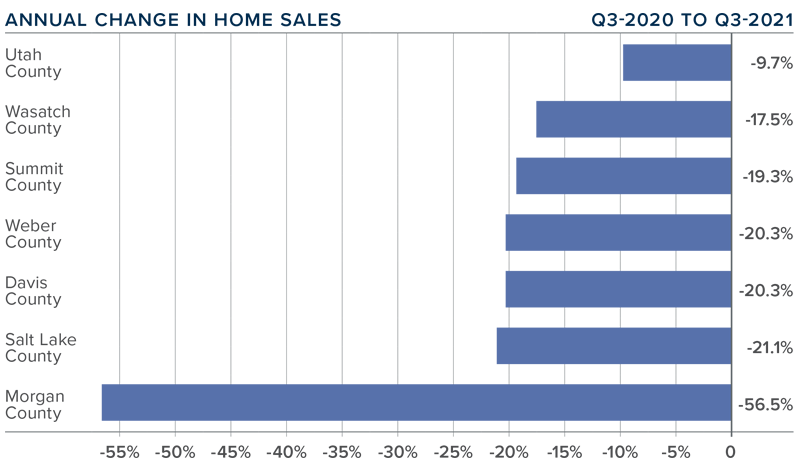
UTAH HOME PRICES
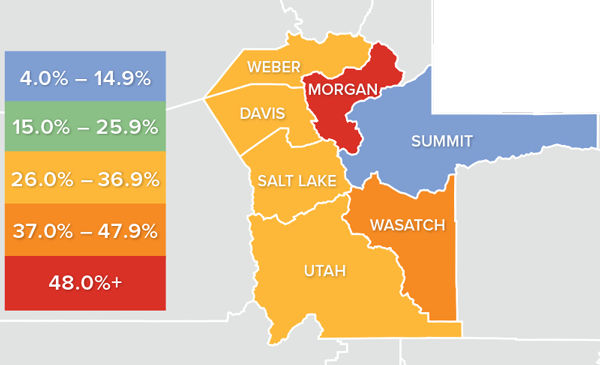
❱ With the economy performing extremely well, and mortgage rates holding close to their historic lows, it was not surprising to see sale prices continue to trend higher. Compared to a year ago, prices were up 23.8% to an average of $600,715. Prices also came in 3.8% higher than in the second quarter of this year.
❱ Although Summit County appears to be underperforming, it is worth noting that it is the most expensive county in this report, with an average price in the third quarter of $1.58 million. I am not particularly concerned at the decline since it is likely to be short-lived.
❱ All counties contained in the report except Summit saw prices increase by double-digits relative to a year ago. All counties but Summit also saw impressive gains compared to the previous quarter.
❱ In the second quarter Gardner Report, I suggested that the annual change in home prices was going to soften, which proved accurate. Although price growth remains well above the long-term average, I expect to see the pace of growth continue to slow as we close out the year.
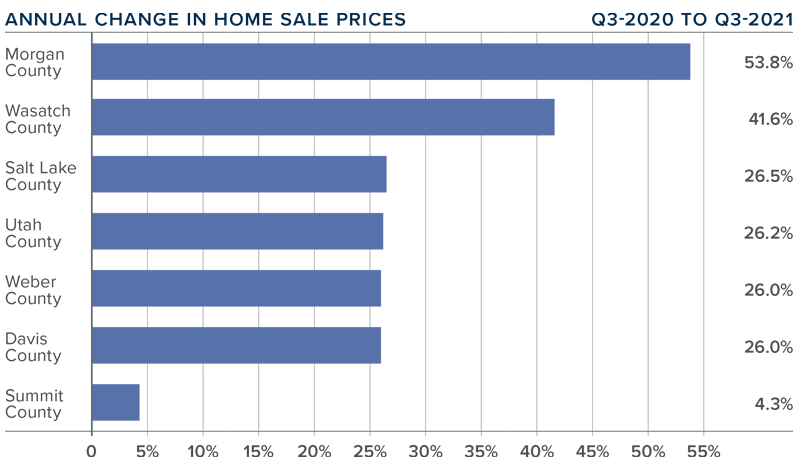
DAYS ON MARKET
❱ The average number of days it took to sell a home in the counties covered by this report dropped 21 days compared to the third quarter of 2020.
❱ Homes again sold fastest in Davis County, which was one of only two counties with average sale time below two weeks. Relative to a year ago, the greatest drop in market time was in Summit County, where it took 41 fewer days to sell a home.
❱ During the quarter, it took an average of 22 days to sell a home in the region. Although this is lower than a year ago, it was up 3 days compared to the second quarter of this year.
❱ Rising inventory levels led to more choice in the market, which put slight upward pressure on market time. This is not a concern, and though it might please home buyers, we are still far from a balanced housing market.

CONCLUSIONS

This speedometer reflects the state of the region’s real estate market using housing inventory, price gains, home sales, interest rates, and larger economic factors.
Utah’s economy stands on very solid ground. A stable economy and historically low mortgage rates are very stimulative to home buyers. Even though we have seen inventory levels grow and market time rise modestly—both of which favor home buyers—the data in aggregate is still heavily in favor of home sellers. As such, I have moved the needle a little more in their favor.
ABOUT MATTHEW GARDNER

As Chief Economist for Windermere Real Estate, Matthew Gardner is responsible for analyzing and interpreting economic data and its impact on the real estate market on both a local and national level. Matthew has over 30 years of professional experience both in the U.S. and U.K.
In addition to his day-to-day responsibilities, Matthew sits on the Washington State Governors Council of Economic Advisors; chairs the Board of Trustees at the Washington Center for Real Estate Research at the University of Washington; and is an Advisory Board Member at the Runstad Center for Real Estate Studies at the University of Washington where he also lectures in real estate economics.
 Facebook
Facebook
 X
X
 Pinterest
Pinterest
 Copy Link
Copy Link



